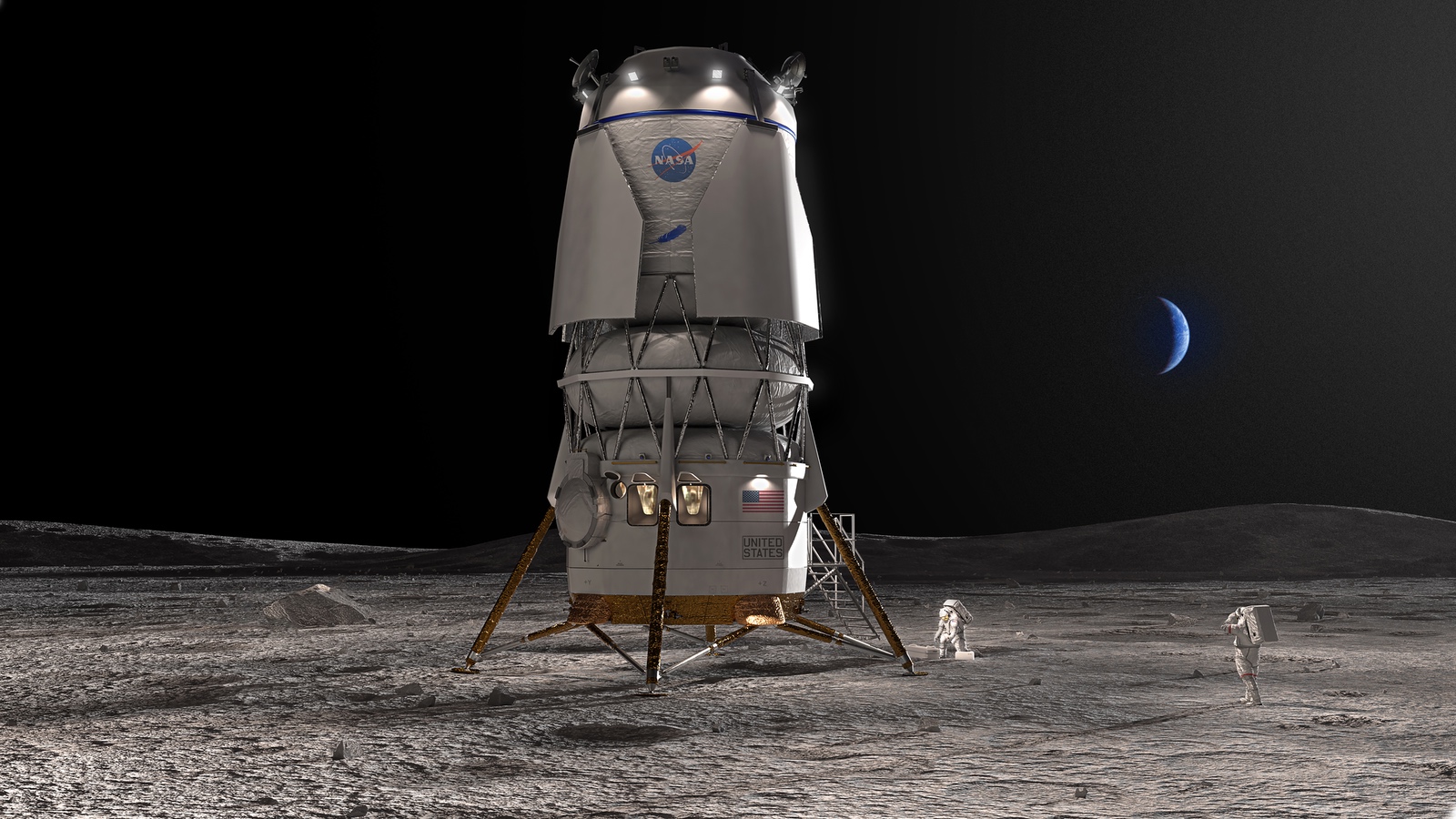
WASHINGTON — The two companies contracted by NASA to develop manned lunar landers have also begun work on cargo versions of their spacecraft.
NASA has exercised options in Human Landing System (HLS) awards to Blue Origin and SpaceX to begin initial design and development work on versions of their landers that can carry large amounts of cargo to the lunar surface.
NASA made a passing reference to the work in a Jan. 9 announcement about delays to the Artemis 2 and 3 missions. “NASA also indicated that it has asked the suppliers of the Artemis human landing system – SpaceX and Blue Origin – to begin applying the knowledge gained in the development of their systems as part of their existing contracts toward future variations for potentially delivering large cargo on later missions.” He said in a press release.
“In the last few months, we have asked our human landing system providers, SpaceX and Blue Origin, to apply the work they are doing on humanized versions of their landers to develop a cargo version that can advance the Exploration Systems mission,” said Amit Kshatriya, deputy associate administrator for the Moon to Mars Program. “Landing large cargo to the surface,” NASA said in a briefing call on January 9. However, NASA did not provide any further details about this work at the time, with the briefing focusing on delays to upcoming Artemis missions.
In a Jan. 19 statement to SpaceNews, NASA spokeswoman Katherine Hambleton said the work is being done under Blue Origin's HLS contract options, which were awarded in May 2023, and SpaceX's “Option B” award in November 2022, which modified the original contract. . SpaceX won the HLS contract in April 2021. The options, which cover working through an initial design review, do not require additional financing beyond the $3.4 billion for Blue Origin and the $1.15 billion for Option B from SpaceX.
“NASA expects these large landers will have much in common with already operational human landing systems with modifications to payload interfaces and deployment mechanisms,” NASA stated. “Initial design requirements include delivering 12 to 15 metric tons to the lunar surface.”
NASA added that no payloads have been identified yet for these vehicles. The closest cargo lander that will be used is Artemis 7, a mission expected not until the early 2030s.
Neither company has publicly discussed work on cargo versions of their HLS landers. Elon Musk, CEO of SpaceX, mentioned the ability of his company's Starship vehicle to land large payloads on the moon in… A presentation published by SpaceX on January 12. “We want to go far beyond what NASA has asked us to do,” he said. “We want to go beyond NASA's requirements and actually be able to put enough payload on the Moon with enough frequency that you can actually have a permanently occupied lunar base.”
Blue Origin and SpaceX aren't the only ones working on a large cargo lander. ESA is in the early stages of development of Argonaut, a cargo lander that ESA proposes to provide for future Artemis missions. Argonaut, as currently designed, will carry about two metric tons of cargo, much less than NASA proposes with HLS cargo variants.
The cargo landing options exercised by NASA are not NASA's first contracts with companies regarding the delivery of cargo to the Moon. NASA selected the two companies, along with three others, in the second round of its Commercial Lunar Payload Services (CLPS) program in November 2019. SpaceX demonstrated the Starship service, which the company said at the time could deliver up to 100 metric tons to the moon . On the surface, while Blue Origin showed off the original cargo version of the Blue Moon lander, capable of carrying several metric tons to the moon.
Neither Blue Origin nor SpaceX have won any CLPS mission orders, and it is not clear whether either company has bid on any of the missions awarded by NASA through the program.
Related

“Web maven. Infuriatingly humble beer geek. Bacon fanatic. Typical creator. Music expert.”





More Stories
Scientists confirm that monkeys do not have time to write Shakespeare: ScienceAlert
SpaceX launches 23 Starlink satellites from Florida (video and photos)
A new 3D map reveals strange, glowing filaments surrounding the supernova